1986-88 Holden VL Commodore Turbo Buyer's Guide

























|

|

|

|

|

|

|

|

|

|

|

|
Back in the eighties, the move by Holden to adopt a Japanese engine – from Nissan – as a mainstream powerplant was incredibly brave. Even foolhardy. How on earth will the local market accept something that’s not a home-grown product?
Holden VL Commodore Turbo
However time has proved that any niggling doubts or mechanical jingoism were largely overcome by the fact that the inline Nissan six, with its overhead cam, really was a major generational step forward. It proved to be as tough as the engines it displaced, with a whole lot more performance potential.
Add in the turbo and we’re talking impressive figures, with power at 150kW at 5600rpm and peak torque of 296Nm at 3200rpm. That meant 32 per cent more power and 20 per cent more torque than the normally-aspirated unit.
| Watch the video: Holden Commodore VL Calais Turbo
It was clear from day one that the reviewers were on-side. Wheels mag in its August 1986 issue said: "The engine is silky smooth and flexible. Accelerating with wide-open throttle (WOT in engineer-speak) the turbo’s up to maximum boost pressure and into full stride as it clears the 2400rpm mark. Equally importantly, it willingly works right down to 1500rpm or less. It may lack the raw bottom-end punch of the bigger engines (read bent-eights) when accelerated from lowly speeds, but there’s no real suggestion of turbo lag either. What you get is immediate response which gathers strength very quickly as the revs rise to two-five."

"The turbo challenges the bent block alternative for performance leadership. Measured against the VK Commodore’s leaded petrol five-litre V8, the VL’s turbo six has lower maximum torque level and higher maximum power, which translates simplistically to less performance down low and more up top. The turbo may, however, prove to have more performance everywhere when ranged against the coming VL unleaded 4.9-litre V8…"
| Read more: Holden VL Commodore history
Those thoughts on how it would compare with the upcoming V8 were spot on. In the end, Wheels in February 1987 compared a VL Turbo Calais not with a stock V8 but an HDT SS Group A. And guess what? Even in this guise, the V8 trailed just a little in the horsepower stakes. Actually, the numbers were interesting: For the V8 they were 137kW at 4400rpm and 345Nm at 3200, versus 150kW at 5600 and 296Nm at 3200.
Not surprisingly, the V8 was more convincing off the line, but found itself being rounded up once the turbo got on song.
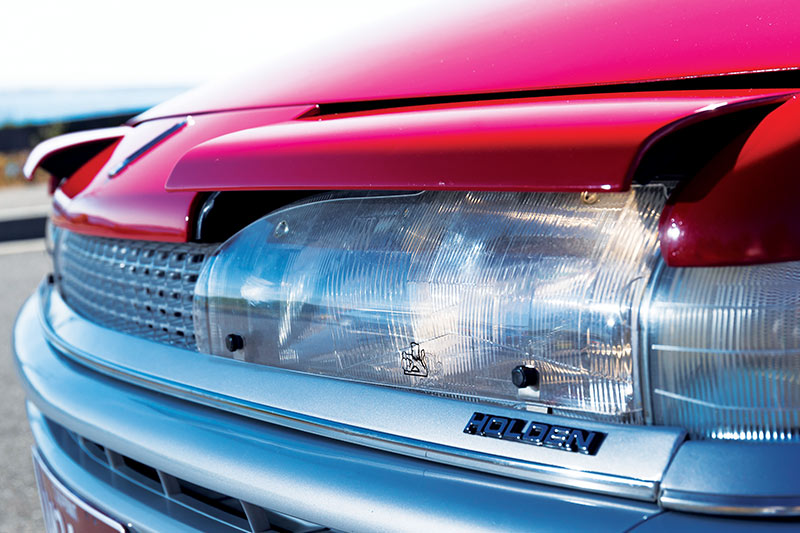
However it was the SS which won the comparo. While the turbo won the tech race in the engine department, the HDT at not a lot more money ($29,600 versus $28,400) was better fitted-out in the cabin and a far tidier handling package. Still, we reckon it says a lot about the turbo car that it was lined up against such lofty company.
| Smart classics: Holden Commodore VL Turbo
George Alesios is the second generation and third member of his family to own this example. It was bought new by his dad back in 1986 and at the time it represented a big financial decision for a growing family. Unusually, it’s a manual. Back then autos were regarded as the default transmission on the Calais, so a five-speed manual had to be ordered and involved a six to eight week wait.
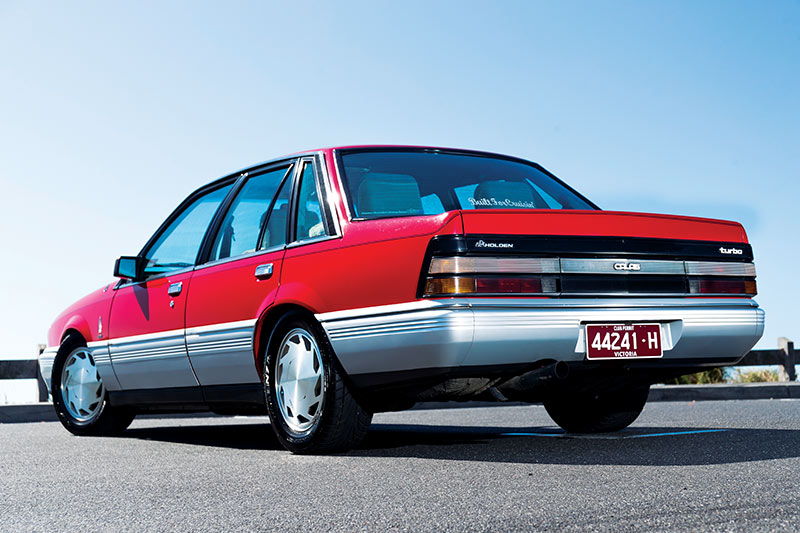
"I got it for my 21st as a gift," says George, "and have had it ever since. I garage and lock it up and look after it as best I can.
"It’s been in the family a long time – 32 years – it got passed down. My older brother got it before me, and on to me. I don’t know where it’s going to be passed next!
Surely he considered selling it once it was time to replace it with something newer? George emphatically shakes his head. "Not at all. The best thing was it was passed down as a gift. If it had been something I bought it would have been different and there might have been more pressure to get rid of it.
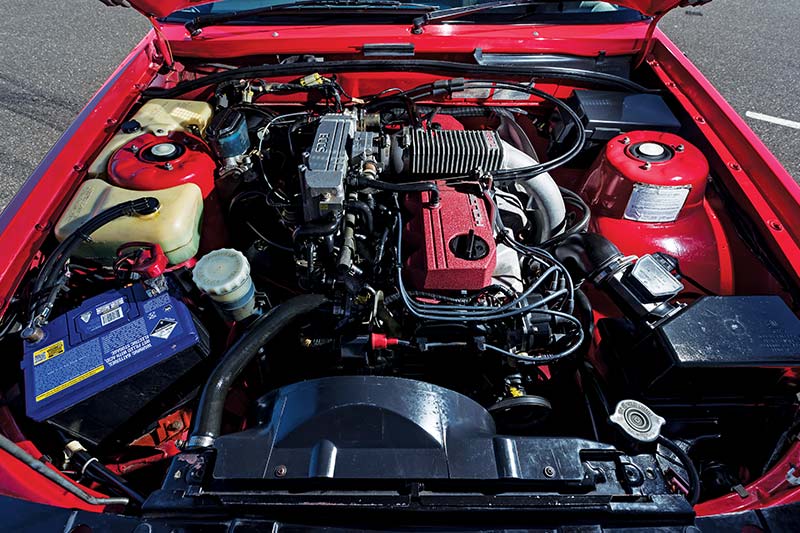
"It was the old man’s first new car and he got it at 36 – he’s now 68 – he was a young fella. The condition (when it was offered to me) was the turbo had to come off. He said if you want to get it, we’ll take the turbo off because it’s got too much power. I said just take it off, I want the car. You know what, it never happened. It was a test to see if I really wanted the car.
"He loves that we still have the car. We do a few things with it together, like changing an inhibitor on it the other day, we’ve done a few little bits and pieces. He’s mechanically minded, so we work on it together. It’s something to remember down the track – we did a lot of jobs."
And on the road? "It’s really nice to drive. Newer cars drive smoother, but it’s great on the road, and handles well." The VL has been lowered a touch with adjustable Konis, but is otherwise stock.

With some 180,000km on board, they’ve had a surprisingly good run. No mechanical troubles – just standard servicing. As George observes: "Since then the RB30 has gone on through the generations – it’s proven itself as a good engine."
What would he advise if we were in the market for one? "They’re a great car but picking up in price. Finding one that hasn’t been tampered with is hard. As for mine, it’s not going anywhere."
HOLDEN VL TURBO MARKET
- Cliff Chambers
Among the regrettable consequences of launching the VN Commodore was the need for Holden to kill off the VL.

Four model changes down the track from the original VB, the VL brought a savvy revamp, done with minimal money but centred on a modern (Nissan) engine with the option of a pretty impressive turbo ‘six’.
The Calais isn’t all that different from a stock VL yet actually looks like a luxury car. Pitted against later, more powerful versions of the Calais, VLs win the desirability test despite costing a lot more than VN-VEs. A little thing called ‘style’ perhaps?
The VL Calais Turbo’s endearing attributes include availability of a five-speed manual gearbox. Even more endearing is the proportion of manual cars still available and the performance they offer.

With cars like these there is always a temptation to modify and a lot of VLs have undergone change that isn’t always for the better. Build costs can exceed $50,000 and owners rarely recover what they have spent. Buyers also need to be convinced they can live with someone else’s vision of the ‘perfect’ Calais.
Most vendors in the current market seem happy to disclose when their car is a ‘replica’ but it pays to be wary and carry out basic checks of authenticity. The Body Code for a Calais is 8VX19 and correct 3.0T engines are designated LW5. Nothing however will stop a robber from acquiring plates from a wreck and riveting them to a standard VL or Berlina so look at several cars before buying and note any differences in trim or mechanical specification.
2018 VALUE RANGE VL Calais Turbo
FAIR: $11,000
GOOD: $22,500
EXCELLENT: $35,000 (auto)
(Note: exceptional cars will demand more)
HOLDEN VL COMMODORE BUYER'S CHECKLIST
Body & Chassis
Given their age and chances of being crashed at some point, any Calais you consider might be harbouring rust or poor-quality repairs. Check the front rails from above and below for kinks, twisting or non-original paint. Big inconsistencies in door, bonnet and boot gaps can indicate a car that’s been in a big crash. Look for rust or repairs to front mudguards, lower doors, boot floors, the area between the rear window and boot aperture and windscreen surround. Replacement floors, guards and outer sills are available, so too the Calais headlamp support panel and light covers. Replacement plastic bumpers cost more than a chrome bumper for earlier Holdens. A full kit of body rubbers costs $1000-1200 depending where you buy.
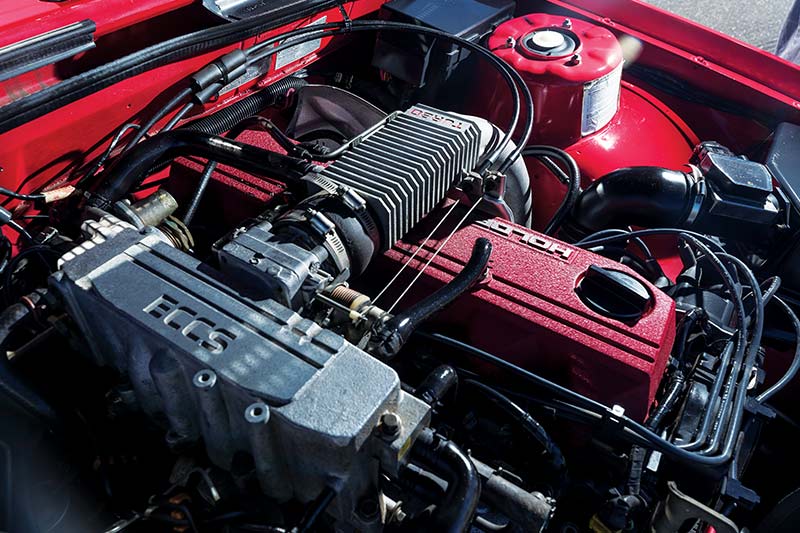
Engine & Transmission
VLs with untouched engines or turbochargers will be now be extremely rare so when buying insist on seeing receipts for renovation work. A professional mechanical inspection is essential to ensure the warp-prone cylinder head is holding compression and the turbocharger is working to capacity. White smoke from the exhaust indicates turbo or head-gasket failure, blue smoke rings or internal engine wear. Overheating is especially threatening to turbo engines so the cooling system must be tested. Clutch shudder, bearing noise and synchromesh failure are common in manual cars but replacing the original five-speed with a later, stronger Nissan gearbox is common and relatively cheap.
Suspension & Brakes
Huge wheels and chopped coils are signs of a Calais to be avoided or at least treated with caution. Extreme lowering allied to ultra low-profile tyres will deliver shock loadings that can affect suspension components. Look for uneven tyre wear and rubbed inner-mudguard areas. Float over bumps indicates the gas shock absorbers are past their prime. Disc/disc brakes were standard on the Calais (and will be found on the vast majority of Turbos). Plenty of upmarket rotor and caliper conversions are available and will cost $1000-2500, Mushy pedal suggests hydraulic leaks, hard pedal a failed booster.
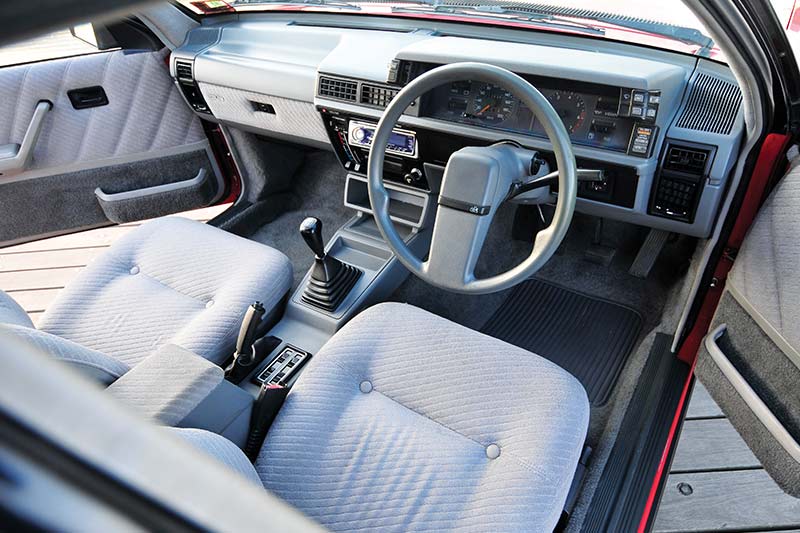
Interior & Electrics
Cars with sun-damaged plastics are best avoided as replacements for disintegrating components can be hard to find. The cloth trim used in these cars wasn’t especially durable and can split due to age. Front seats sag as the foam crumbles into oblivion so unless the interior is already restored, check costs with a motor trimmer before buying. Hood-lining sag is a chronic Commodore problem so look for loose cloth above the rear seat. Ensure that the electric windows all work without binding or shuddering and that the cruise control does as well. Air-conditioning in 1980s cars needs to have been overhauled and adapted to accept CFC-free refrigerant.
1986-1988 Holden VL Commodore Turbo specs
NUMBER BUILT: N/A
BODY: all-steel integrated body/chassis four-door sedan and station wagon
ENGINE: 3.0-litre in-line six-cylinder with overhead camshaft, fuel-injection and turbocharger
POWER & TORQUE: 150kW @ 5600rpm, 296Nm @ 3200rpm
PERFORMANCE: 0-100km/h 7.8 sec, 0-400 metres 15.5 sec
TRANSMISSION: five-speed manual or four-speed automatic
SUSPENSION: Independent with struts, gas inserts, coil springs & anti-roll bar (f) Live axle with trailing arms; coil springs, gas shock absorbers, anti-roll bar (r)
BRAKES: disc (f), disc (r) with power assistance
TYRES: 205/65HR15 radial
Unique Cars magazine Value Guides
Sell your car for free right here
Get your monthly fix of news, reviews and stories on the greatest cars and minds in the automotive world.
Subscribe

.jpg)






.jpg)





.jpg)



